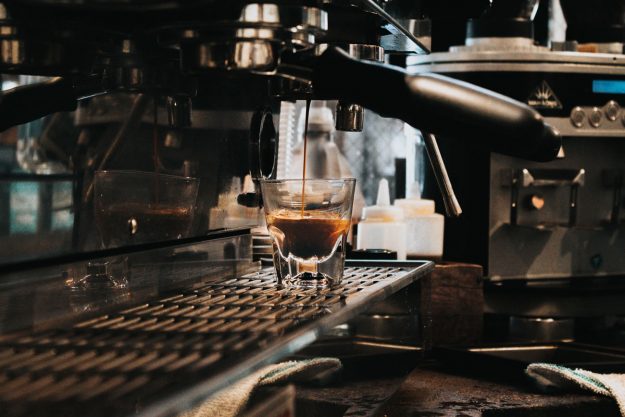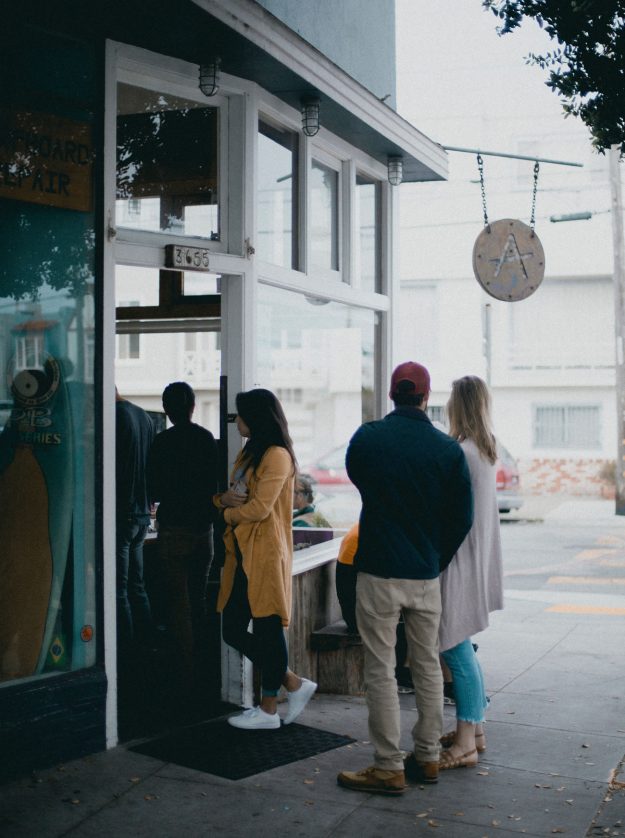Use case: intelligent catering

What’s the issue?
Grabbing a sandwich or coffee at lunchtime or in between lectures is necessary sustenance and also often a social activity. But sometimes the cafe is too busy and students may not have time to wait in the queue before walking to the next lecture. Can data and analytics be used to smooth out demand or respond more effectively in different circumstances? What if the experience of buying and eating was significantly more tailored to the individual, and also perhaps nudging them to a healthier option or encouraging them to environments where they are more comfortable?
What could be done?
Certain times are likely to result in high demand at campus cafes and food outlets, such as lunchtime, but within those times there is flexibility to respond in different ways, or indeed encourage students to arrive at a different time. By using timetabling or event data, increased flow of people to the cafes could be predicted, and real time information on actual location and flow can reinforce and clarify the expected demand.
If the demographics of the individuals were known, special offers or menu choices could be signposted at alternative venues to encourage groups to move elsewhere. For example an event by the Vegan Student Society is just finishing, on the other side of campus from the main canteen which is currently full to capacity. A nearer food outlet that is typically quieter has ordered in some menu items that have been identified as favourites by this demographic using previous purchase history and feedback. Notifications of special offers are sent to students’ mobile phones as their event finishes, encouraging groups of them to divert.
Combining data on where their friends are could introduce a social dimension, and include recommendations and feedback. For example, your friend Katie has just tried the new pizza and rated it highly, or Meena and Harry are on their way to the Japanese food festival starting in 5 minutes at the students’ union pop up cafe.
Similar strategies more widely could “nudge” students towards different timings (“happy hour” offers on menu items) or different locations, by suggesting alternative menu choices. These could be tailored by knowledge of their specified preferences (eg dietary requirements or healthy eating aims) or purchase history, and triggered by data on people flow. This data might be shared by apps on the individuals’ phones, or through “loyalty cards” but alternative methods include cameras detecting people approaching and targeting them with “adverts” or offers that are designed to attract different demographics (usually through marketing analysis or aggregated purchase history data).
The advantages to the customers could include a more tailored eating experience, cost savings with special offers, opportunities to try out new menus, less queuing, and linking up with friends.

What examples are there?
Costa Coffee has developed an “intelligent coffee station” that uses cameras to detect eye movement and respond with engaging images. Facial recognition is used to tailor the experience using deduced demographic profiles. For example, different coffee drinks are suggested based on age, although data is kept anonymous and used only for analytics, in part to assess how successful their targeting is. Also calculated is the “dwell time” to see how quickly people make a purchase. Other technologies included are near field communications, telemetry and digital signage, providing facilities including cashless payment.
Door detectors are one of many types of sensor that can count the number of people to assess footfall in the cafe, others include video cameras that recognise people. These are more commonly used in transport although integrated analytics would draw data from multiple sources. There are examples in retail for example used in Manchester, analysing queuing and the popularity of different areas of the store, but also contributing to resourcing strategies such as staffing levels.
The Gebni app https://gebni.com/operates an adaptive pricing methodology, responding to demand not only for the end product but the ingredients used in it. This allows “surge pricing” to make items more expensive when demand is high, but conversely other dishes that don’t share the ingredients of the item in short supply (at any particular location) could be on special offer. This provides some control over the demand and flow of customers, for example incentivising ordering at different times.
Taco Bell uses tablets, kiosks and mobile apps to collect orders. Some of these allow deeper exploration of the menu including different menu options and add-ons, for example to cater for dietary preferences, and some even include games or entertainment. Other examples of enhancing the customer experience include apps that allow customers to choose the type of music they would like to hear and then incorporating it into the cafe’s playlist.
What about ethical and other issues?
Some data used would require consent from the individual, including location, preferences, contacts and social interests, and would need to be part of a clear ethical policy. Where data is only needed in aggregation (such as density of people) or for demographic targeting (such as facial imagery), it must be clear that individuals cannot be identified and data is deleted appropriately. The principles of ‘nudging’ need to be handled with care, with potential negative connotations of manipulation and coercion, for example, is it acceptable to encourage someone to eat elsewhere based on commercial considerations of supply and profit? On the other hand, there is a convenience and customer experience advantage in reduced queuing, increased choice and better tailoring of products, so a careful balance must be struck.

Who needs to be involved?
Individuals need to give consent to the sharing of their own data, on which many of these example rely. However, such sharing is commonplace for other apps including social media. University academic services and students union services may need to provide access to data on events and timetabling, and campus services such as facilities management and IT would need to coordinate to maximise the benefits.

